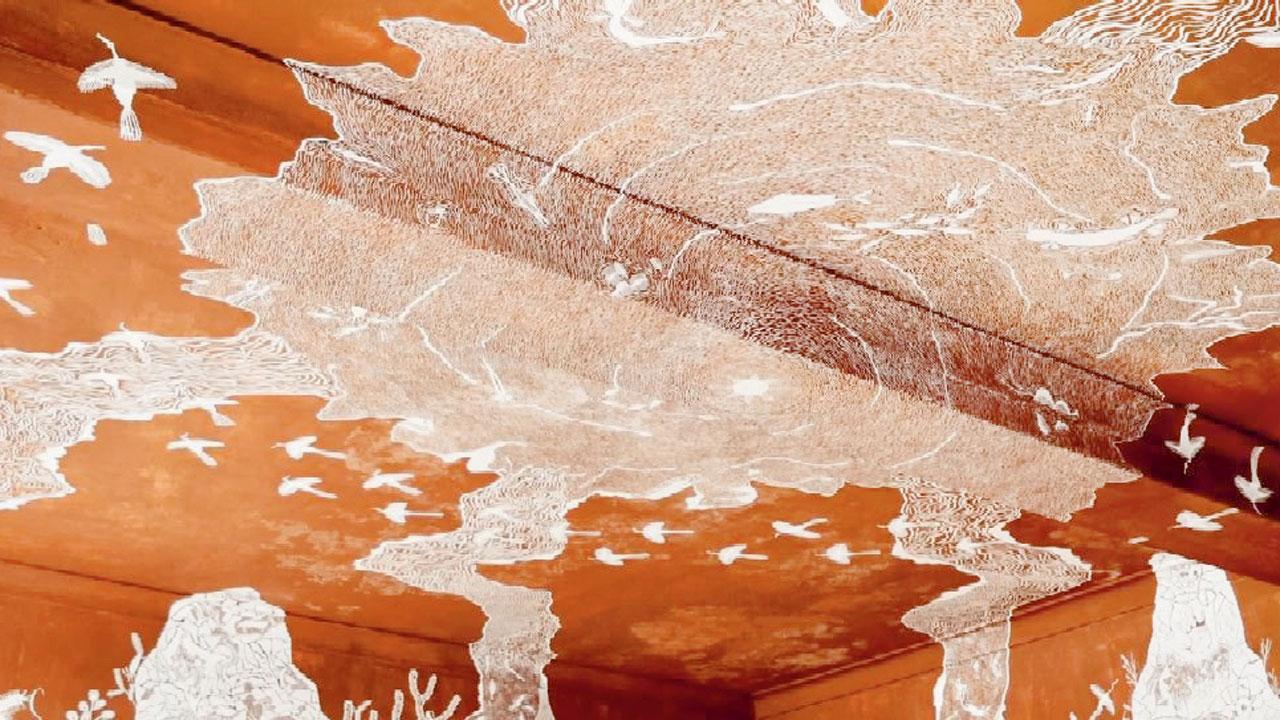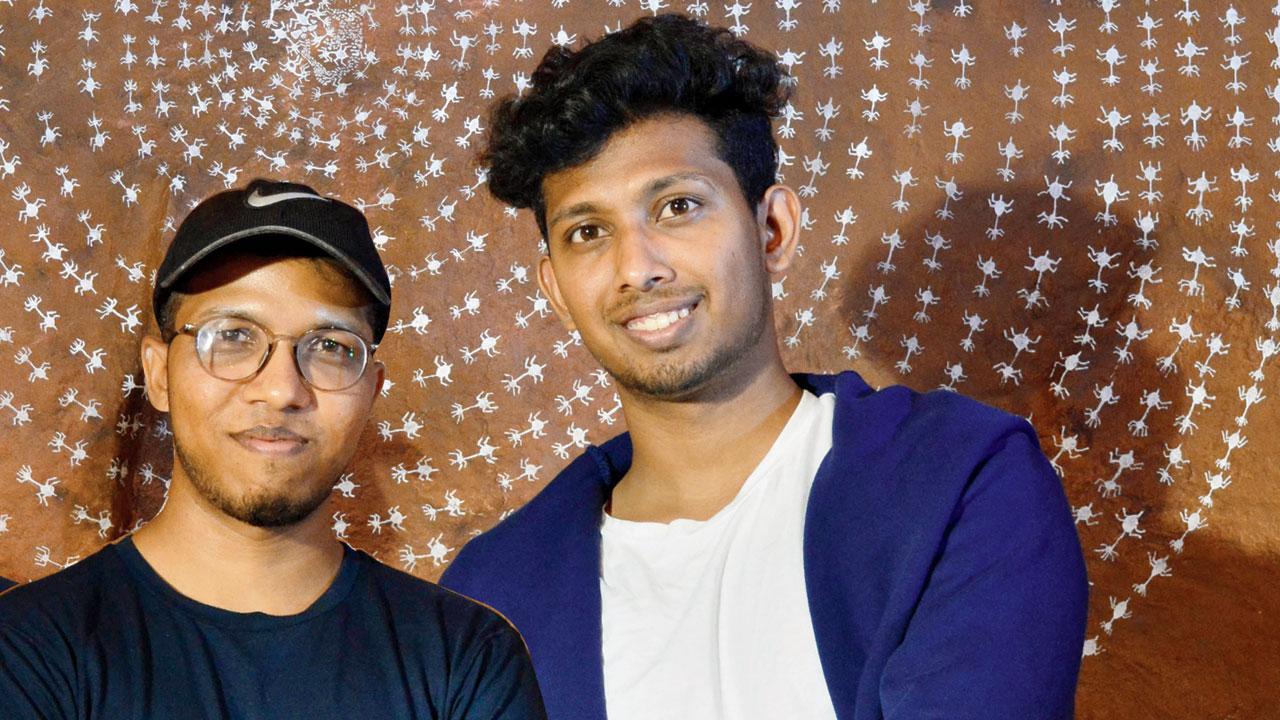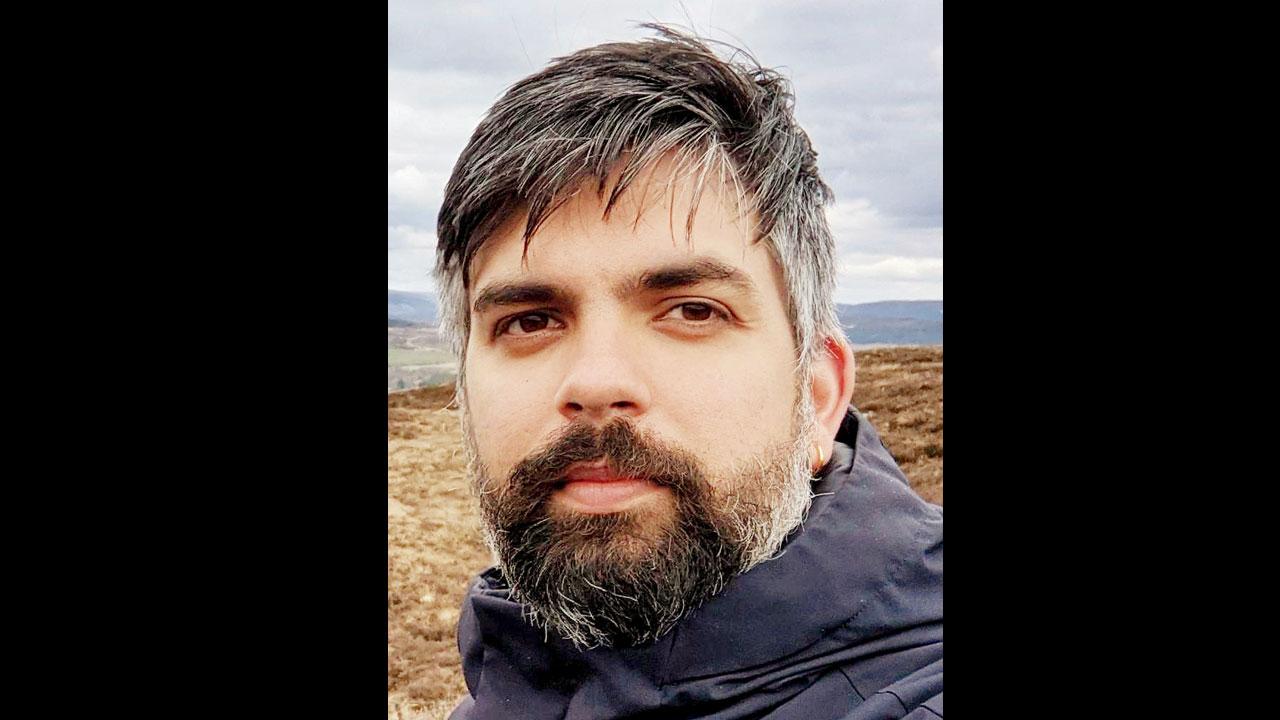A short film inspired by a book that draws parallels between Dahanu’s Warli artists’ link with rivers and water’s role in Japanese island life is a dialogue between artistic mediums

A still from the film where a Warli painting on a ceiling depicts the form’s reliance on nature
After watching the documentary short that now accompanies The Deep, a book on Warli art as it happened to the Vayeda brothers, this writer was looking for apposite grammar. She needed the right syntactic setting to capture ‘flow’ as seamlessly in the written word as it permeates the film and pours out on to its players. Flow characterises the film. Maybe it’s natural for this stream of connectivity to stick out as a thematic epithet; the Warli tribe lives in harmony with the rivers, and Awashima in the Sea of Japan (where the brothers found family and fillip to hone their process) is bound by water on all sides, too.
ADVERTISEMENT

Tushar and Mayur Vayeda
The Deep – Reflections on Warli Art is a film by Arun Wolf who believes “cross-media creative processes encourage those to know about a book who might not be easily drawn to reading”. Mayur and Tushar Vayeda hail from Ganjad, a village located 15 km from Dahanu. While Warli thrives within the community, much like aide-memoire on walls and skirtings, the Vayeda seniors didn’t know it. “The art form wasn’t passed on to us. We learnt and interpreted it in our own unique ways,” shares Mayur. Mayur’s grandfather gave Ganjad its first school and the people there, legal rights for their lands. Hoisted on prominent movements and sounds, the short film journeys with the two artists, their surroundings, approach to art when rendering thoughts on a new medium and if ‘Warli painters’ is a label they’re comfortable with.

Arun Wolf
Like water slapped on the sandy cheeks of a beach, questions and notes on blue sheets come and go; in between, Mayur answers. Tushar is the quieter one, who never misses a chance to laugh and clap every time the director says, “rolling”. The aerial shots give an idea of a tribal group’s self-sustained, isolated reality accentuated with the occasional use of a manjira and dholki. On what terms does one decide the distance between tradition and the unconventional? “Warli is known for its geometric shapes. The typical tarpa [girls dancing in circles] or wedding depictions shape the form’s base, but our storytelling is no longer restricted to local lore. Technology and social media have cut inroads and that can be seen in our people’s artwork. Being invited to an art residency in Japan was a great opportunity; we collaborated and picked ways of experimenting within boundaries,” Mayur explains. He adds that its roots do not dictate the reception of art beyond known shores; the finesse counts most. At home, Mayur says, placing old-style art in a bracket away and apart from contemporary modes is a known practice. The short film is an extension of the Warli brothers’ labours in putting their creative identity on the modern map.
Log on to: tarabooks.com to watch the film
 Subscribe today by clicking the link and stay updated with the latest news!" Click here!
Subscribe today by clicking the link and stay updated with the latest news!" Click here!







